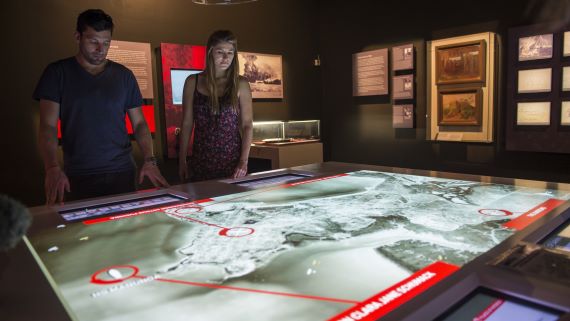Staff at the Darwin Military Museum looked to the future to remember the past for a new state-of-the-art visitor app.
When a new mobile app allowing visitors to have a more interactive experience while visiting the Darwin Military Museum was released last year, the team hoped the technology would be embraced.
They just didn’t realise how popular the museum’s mobile app would become since the launch in June 2021. “We’ve had lots of positive feedback,” said Director Dr Norman Cramp.
“The app is already being widely utilised by the visitors, its implementation has resulted in operational cost savings and it is now a vital tool in the museum’s focus on visitor satisfaction.
“Younger visitors, in particular, really relate to the technology. It’s actually something they expect to be provided with.”
The museum's mobile app, which was co-funded by the Northern Territory Government’s Business Innovation Program, delivers geo-tagged audio commentary, supplementary photography, and an interactive online map of the venue and exhibits to visitors along a walking route.
Dr Norman Cramp recognised a need to enhance the museum’s productivity, boost the bottom line and digitise the customer experience to compete in an increasingly innovative military travel marketplace.
“We were lagging behind international military tourism offerings, and with more Australian’s holidaying at home due to the pandemic, we knew it was time move forward - technologically speaking.”
The World Economic Forum (WEF, 2017), has estimated that in the decade 2016 to 2025, digitalisation will create up to US$305 billion of additional value for the tourism sector alone through increased profitability, while around US$100 billion of value generated in the sector will transfer from traditional players to new digital competitors with innovative business models and value-producing capabilities.
“The digitisation of the museum's visitor experience provided a chance to adopt new business models and processes, as well as the ability to quickly change displays and exhibitions, minimise printing costs, and carefully curate the subsequent order of the customer experience,” he said.
Dr Cramp said their project would not have been possible without the co-contribution of the Business Innovation Program. “We knew we had to make a change and this program helped us achieve that. We learned a great deal about planning and development and we see the results in visitor feedback.”

